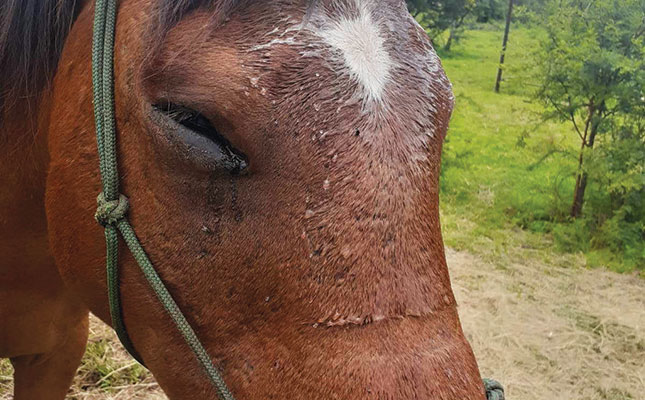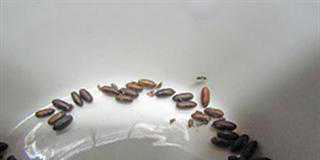
Photo: Dr Mac
The puff adder (Bitis arietans) hibernates in winter and emerges in summer to forage and mate. This is when bites from these snakes usually occur.
The species is found throughout Southern Africa, mainly in rocky grasslands, although it is occasionally seen in trees. It can also swim. Its predation strategy is to lie coiled in ambush after dark, waiting for prey such as small mammals, birds, amphibians and lizards.
Unfortunately, rats that forage in horse feed lure these snakes into making their home close to stables. A favourite hiding place is between bricks placed under large pot plants in a stable yard, the garden, or on the stoep of the farmhouse.
During the day, puff adders usually hide in holes in the soil or under piles of rocks, and come out in the late afternoon to sun themselves in clumps of grass. After heavy rain, they tend to emerge during daylight when their holes are flooded. If you see one puff adder in summer, there are likely to be more.
The female puff adder excretes a pheromone that attracts the male. She will give birth to many live offspring at once.
Physical characteristics
A puff adder has a triangular head, with a short, thick neck that broadens into a wide body up to 40cm in circumference and more than a metre long. Its basic colour varies from yellow to grey, with bands of a darker colour encircling the body at regular intervals.
The puff adder is highly aggressive and will strike with amazing speed. Its teeth are hollow and hinged backwards, so they strike hard, injecting their venom, and then withdrawing quickly.
In one case I encountered, a puff adder bit three adult Jack Russell terriers and six pups, killing all but two of the adults. In my experience, the Jack Russell terrier is the breed most often bitten, as this breed protects its owners fearlessly.
The puff adder’s venom is cytotoxic (cell-destroying) and hence causes haemorrhaging and tissue damage, with severe swelling. The only effective treatment is immediate injection of anti-venom intravenously. Unfortunately, the price is now several thousand rand for a vial.
Previously, expired anti-serum was supplied to veterinarians and remained effective for several decades after being harvested from horses. Horses are often bitten in the face when grazing.
Treatment without anti-venom
I was once called out to treat a mare that had been bitten by a puff adder. The mare (pictured) was injected intravenously with corticosteroids and the hard, painful swelling started to reduce within 20 minutes.
I also powdered six antihistamine tablets, gave them orally with water, and washed her mouth out with ice-cold water. As her throat opened, she started breathing more easily.
She was then given further treatment with an anti-tetanus vaccine and long-acting penicillin. Despite the lack of anti-serum, the swelling went down.
She was kept on prednisolone tablets for a week, with a gradually reduced dose. Her owner hand-fed her with a wet porridge of All Time Balancer and Speedi-Beet, and dribbled water carefully down her throat. Much to my surprise, the tissue did not slough away and the swelling gradually subsided.
Ten days after being bitten, she was still being watered and fed by hand, but had started nibbling on green grass.
Dr Mac is an academic, a practising equine veterinarian and a stud owner.













